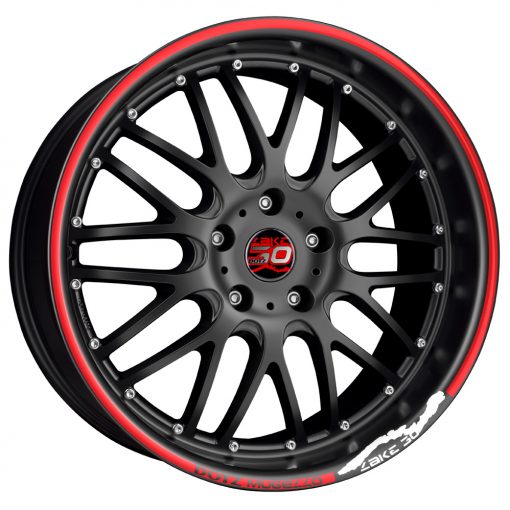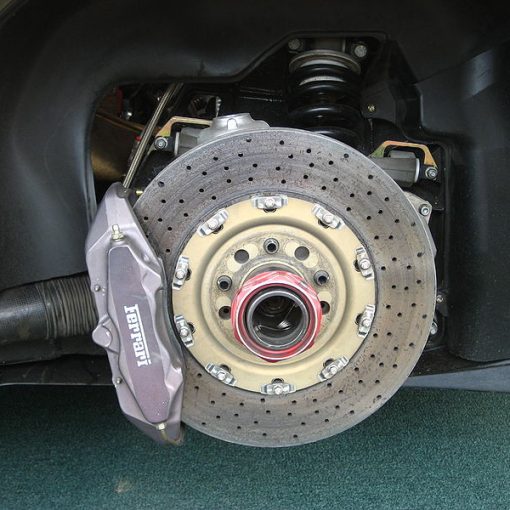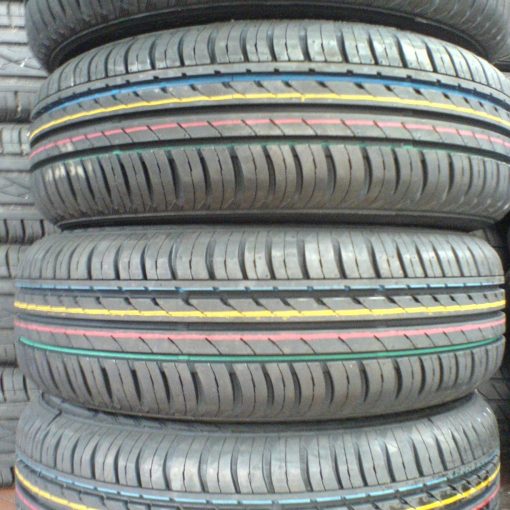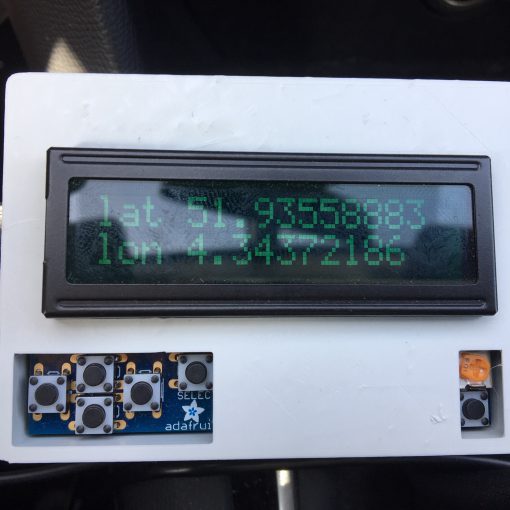Car suspension is a complex field. Generally speaking, the goal of the suspension setup is to minimize load transfer (or at least influence it in a positive way) and maintain contact between the tires and the road surface. Several components are involved and can be modified.
Bushings
Road cars usually employ rubber bushings between suspension parts and the car body. Rubber is a logical choice for road cars as it dampens vibrations. The disadvantage is that is has play, giving up rigidity and precision. As a result, one of the first steps of upgrading a car’s suspension is often the replacement of various rubber bushings with polyurethane bushings. Powerflex is a popular brand for replacement bushings.
Springs
The springs carry the weight and determine the ride height of the car. The spring rate affects how easily a spring can be compressed or expanded. Ride height can usually be adjusted on race suspensions (“coilovers”). It is generally desirable for track use to have the car ride as low as possible without the floor touching the road during full spring suspension, and without the tires rubbing inside the wheel wells. Such a low ride height will not be practicable for road use.
Stiff springs are generally desired in track cars to counter body movement and thus load transfer. In practise, springs and shock absorbers work closely together and must be matched for a good suspension setup. They are often sold as set.
Shock absorbers
With only springs and no shock absorbers, the car would oscillate upon load changes. This is easily shown by pressing down on a corner of a car with bad shocks – the corner will not come up again and stay there, but move down and up again, possibly several times.
Shock absorbers have two characteristics, compression (bump) and rebound. Compression determines how easily the shock absorber can be compressed, i.e. when weight is transferred to the wheel. A shock absorber must be stiff in compression to reduce body movement, but too stiff means that bumps are carried through to the car. Rebound determines how easily the shock absorber can be expanded and thus returns to its original position after being compressed and how well it follows road irregularities.
Track suspensions usually allow for the adjustment of compression and rebound. Race suspension will often allow for the adjustment of four parameters: low- and high-speed compression and rebound. It is generally desirable to have softer high-speed values (to smooth out small surface irregularities) and stiffer low-speed values to counter body movement.
Sets of aftermarket springs and shock absorbers are often called coilovers. This term dates from an era when cars had more primitive suspensions with separate shock absorbers and potentially leaf springs. Most cars these days have coilover suspension by default. Aftermarket coilovers are often threaded to permit ride height adjustment.
While you can buy cheap chinese-made coilover sets (often called “eBay-coilovers” on online forums), I highly recommend spending more money for a decent set as the cheap sets are of poor quality with varying damping rates. A popular choice in Germany is the KW V3 dual-adjustable set, although I have read that it is borderline soft for track use. KW also sell their more up-market Clubsport and Competition suspensions.
Other important European manufacturers for suspension components are Bilstein, Eibach, H&R, and Koni.
Anti-roll bars
Anti-roll bars (also called sway bars) reduce body roll by linking the left and right wheel of an axle. Different thicknesses of anti-roll bar on front and rear axle offer a relatively easy way of influencing load transfer. Generally speaking, the softer axle has more grip. As a result, rear-wheel drive cars have bigger anti-roll bars up front to fight oversteer, while front-wheel drive cars have bigger rear anti-roll bars (or even twist-beam rear suspension, essentially a really big anti-roll bar) to fight understeer. As a side effect, a front-wheel drive car may lift the inner rear wheel in a corner (often seen on the Mk 2 Golf) whereas a rear-wheel drive car might lift the inner front wheel – something that can be seen in old pictures of e.g. BMW 2002 touring cars.
Anti-roll bars for track use are usually adjustable, making it possible to fine-tune load transfer.
Suspension geometry
After suspension upgrades, it’s time to align the suspension. Three parameters are of importance: camber, caster, and toe. Camber is the angle of the wheel to the ground, caster the angle of the suspension (usually the shock absorber) towards the vertical in direction of travel, and toe is whether the front of the wheels is turned inwards (toe-in) our outwards (toe-out) when viewed from above. All three parameters influence the willingness of the car to turn in, cornering grip, and straight-line stability. Road cars always use conservative setup for low steering forces, stability, and reduced tire wear. For track uses, much higher caster and negative camber values are desirable. My BMW e.g. has more negative camber on the rear than on the front to induce understeer – desirable in a road car as it is easier to control than oversteer, but unwanted in a track car.
In a nutshell
The items mentioned above – bushings, springs, shock absorbers, anti-roll bars, and the suspension geometry – plus tire pressure, offer a multitude of parameters to adjust and optimize. Suspension setup is a complex subject, and it is easy to get lost. Books have been written on the subject and much information can be found online. As a general guideline, oversteer can be fought by stiffening the front or softening the rear, understeer the other way round. On a dual-use car, some comfort requirements remain, limiting the stiffness of springs and shock absorbers. Race cars can be much stiffer, depending on the weight of the car and the bumpiness of the track – just look at karts, where there is practically no suspension.




